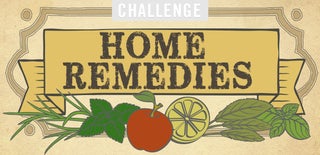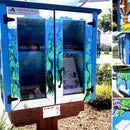Introduction: Natural House Cleaning
Here is a simple basket containing almost everything you need to keep your floors beautiful, your kitchen germ-free and shiny, and your bathroom disinfected and squeaky clean. And all with products you could eat for lunch!
It's super easy to put together and so cheap you can give one to all your friends for their spring cleaning, too.
Step 1: What’s in My Basket?
Five natural cleaners to help keep your floors beautiful, your kitchen germ-free and shiny, and your bathroom disinfected and squeaky clean.
The 5 items are:
1) Baking Soda – cleans, deodorizes, softens water, scours. A miracle cleaner. When mixed with water it forms a slightly alkaline liquid, which cuts through grease and dirt on almost any surface.
2) Lemon – one of the strongest food-acids, effective against most household bacteria. Lemon juice is perfect for bleaching, disinfecting, deodorizing and cutting grease.
3) White Vinegar – cuts grease, removes mildew, odors, and stains. It is a natural disinfectant and reduces mineral and lime deposits. It’s a great substitute for ammonia-based cleaners.
4) Spray Bottle – to apply solutions
5) Cinnamon Stick – it smells really good
Step 2: How Do I Use This Stuff?
Air Freshener:
• Baking soda with lemon juice in small dishes absorbs odors around the house.
• Grind up a slice of lemon in the garbage disposal.
• Simmer water and cinnamon or other spices on stove.
Deodorizer (Generally, baking soda does most stinky jobs):
• Plastic food containers - soak overnight in warm water and baking soda
• Litter box – mix baking soda into the litter
• Carpets - sprinkle baking soda several hours before vacuuming. This can also whiten spots.
Floors:
Most floor surfaces can be easily cleaned using a solution of vinegar and water. For damp-mopping wood floors: mix equal amounts of white distilled vinegar and water.
Scouring Powder:
For top of stove, refrigerator and other surfaces that should not be scratched, use baking soda. Clean and shine by applying baking soda directly with a damp sponge. (I haven't tried this on my stainless appliances.) Also use baking soda on marks on your walls from ink, crayon, pencil, marker etc.
Mold and Mildew:
Use white vinegar or lemon juice full strength. Apply with a sponge or scrubby. Lemon juice smalls awesome, but needs better rinsing.
Toilet Bowl Cleaner:
Mix 1/4 cup baking soda and 1 cup vinegar, pour into basin and let it set for a few minutes. Scrub with brush and rinse.
Tub and Tile Cleaner:
For simple cleaning, rub in baking soda with a damp sponge and rinse. For tougher jobs, wipe surfaces with vinegar first and follow with baking soda. (Vinegar can break down tile grout, so use sparingly.)
Food Build-up:
Remove easily from heat-safe surfaces by pouring boiling water over dried on food. Wait a few minutes and wipe clean.
Window Cleaner:
Mix 2 teaspoons of white vinegar with 1 liter of warm water. Use crumpled newspaper or cotton cloth to clean. To avoid streaks, don't clean windows if the sun is on them, or if they are warm.
Cutting Board:
Rub a slice of lemon across the board to disinfect the surface. For tough stains, squeeze lemon juice onto the spot and let sit for 10 minutes, then wipe.
Stains:
Sink: Wipe with vinegar or lemon on a sponge and let sit until the stains fade.
Mothballs:
Lemon peels are a natural moth deterrent – toss them in with clothes or tie in cheesecloth.
Step 3: Disclaimer
I've used these products in most of the ways I describe, especially on my sinks and counter tops. I love using lemon since it smells so good and it does a great job in the kitchen. However, some ideas I collected a while back and haven't tried - like the lemon peel for moths. Also, your appliances and surfaces are different than mine so always test a small amount first.
Step 4: Why Bother?
To avoid using hazardous chemical in your home.
The EPA recommends that we “Consider reducing (our) purchase of products that contain hazardous ingredients. Learn about the use of alternative methods or products – without hazardous ingredients – for some common household needs.”
You can find a complete list of commercial products with hazard information at the following government website:
Step 5: Make a Basket for Everyone!
For each of these baskets, you'll need to assemble:
a basket, box or bag
a lemon
a bottle of vinegar
a cinnamon stick
a box of baking soda
an instruction sheet (print the list in step 2)
Happy Cleaning!

First Prize in the
Home Remedies Challenge

Runner Up in the
Spring Cleaning Challenge

Participated in the
Apocalypse Preparedness Contest













